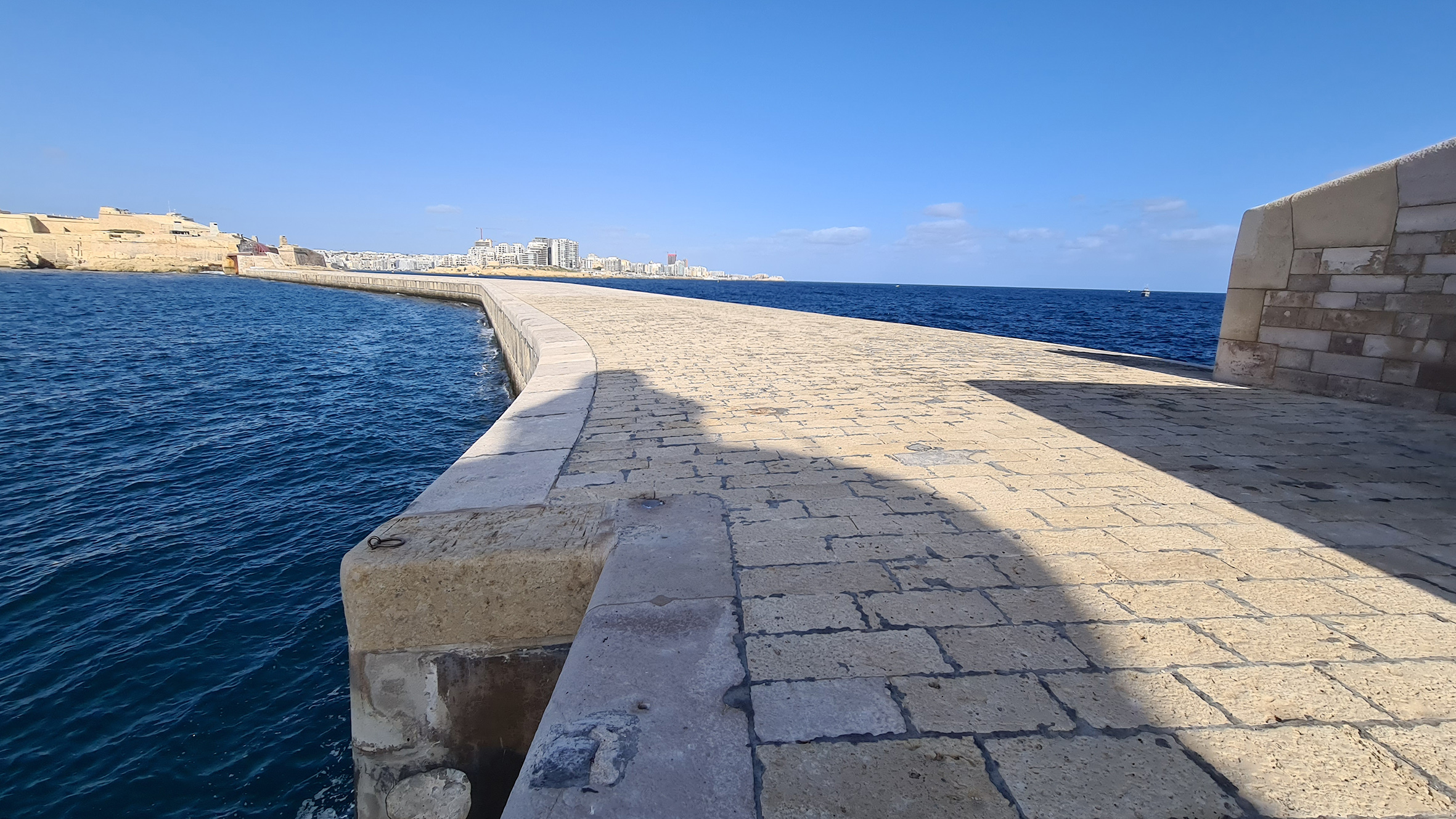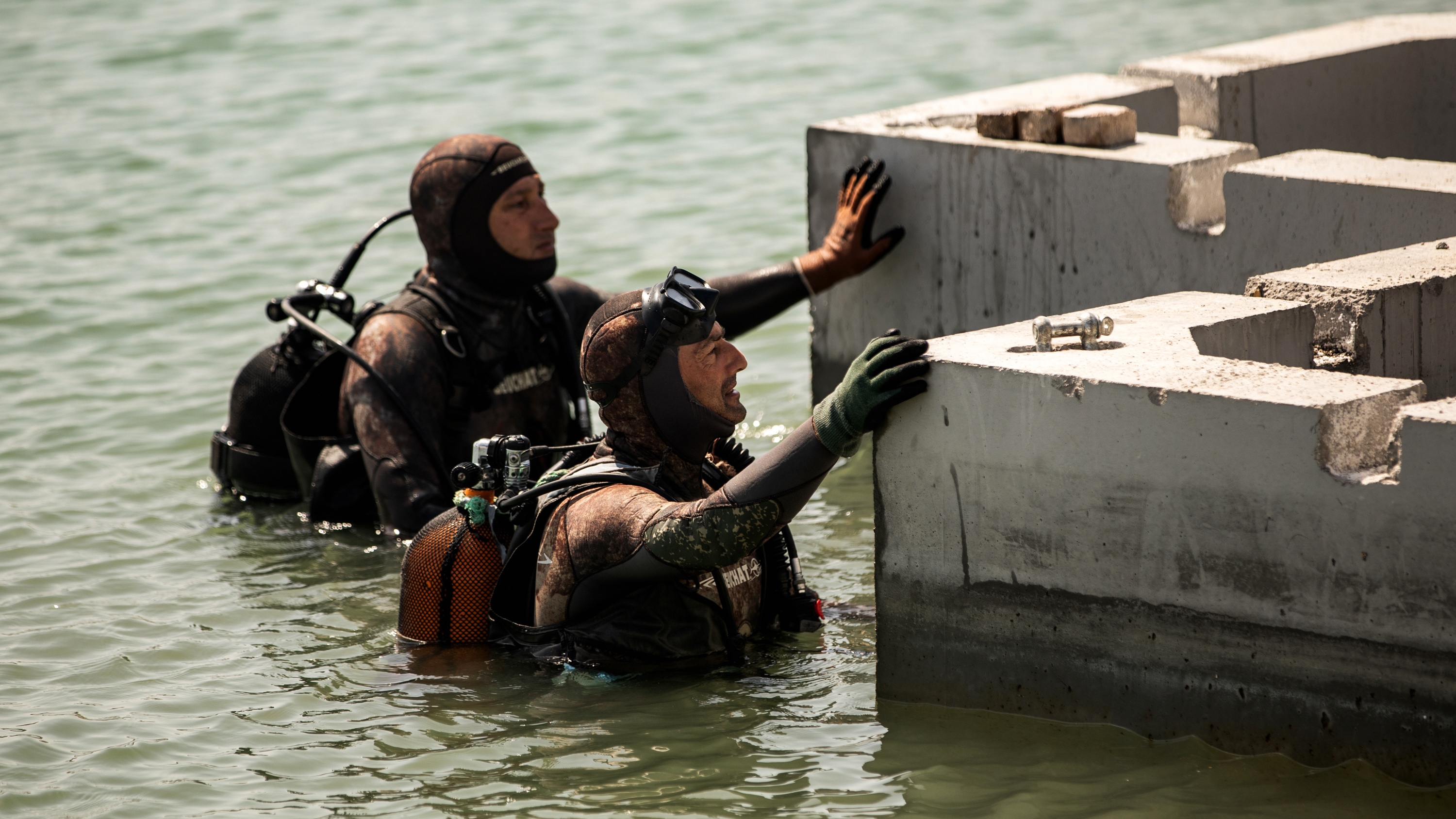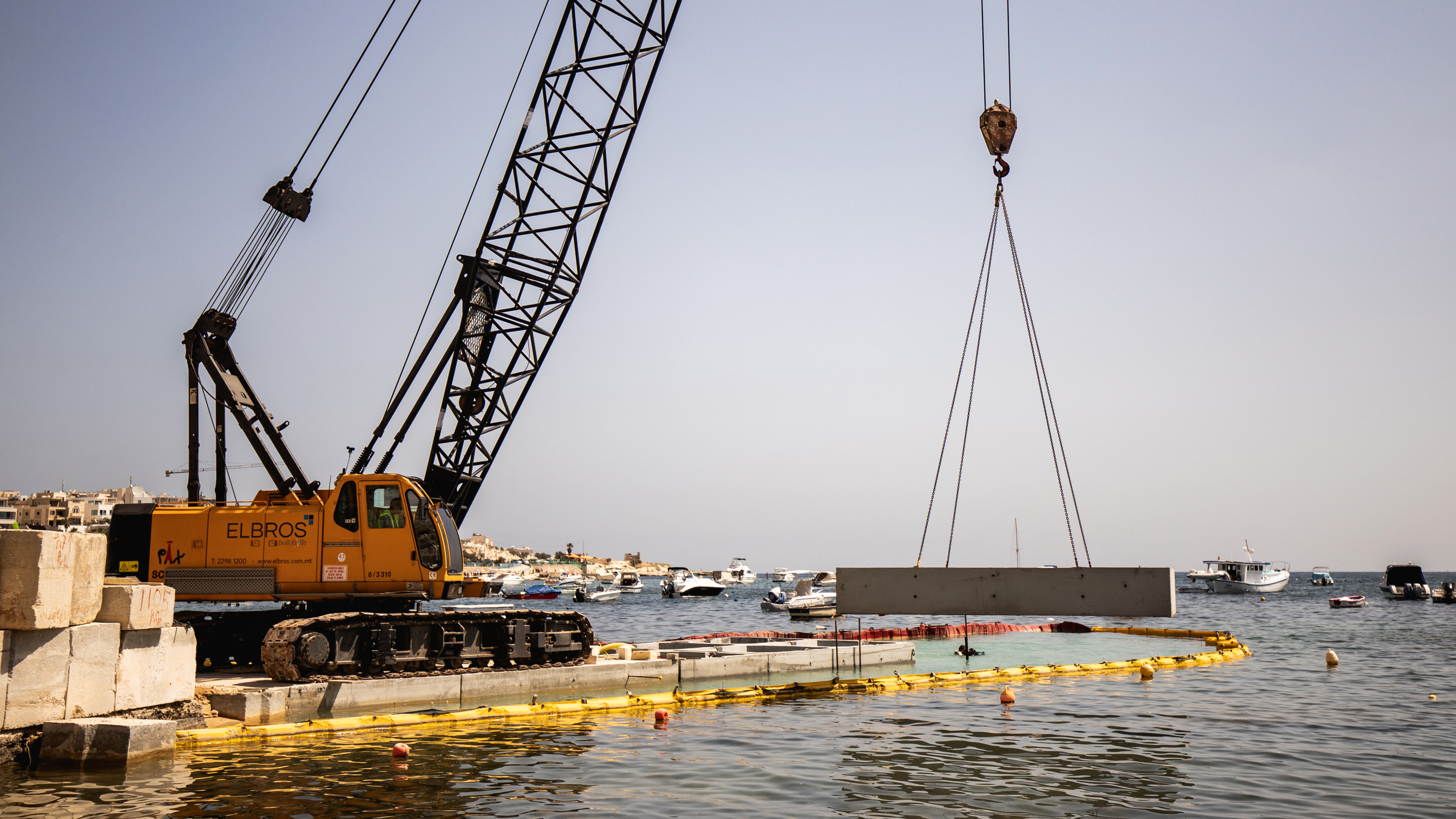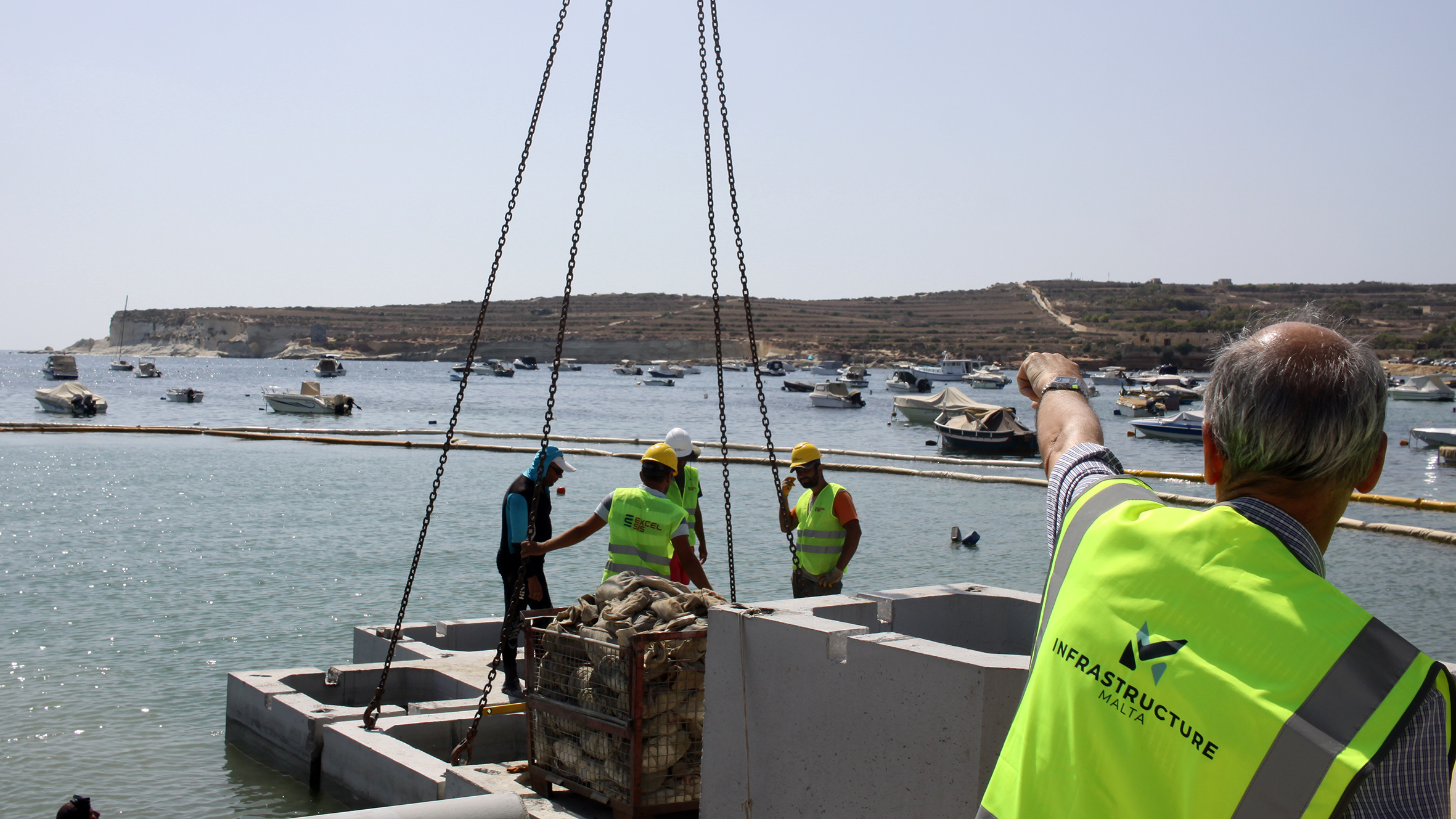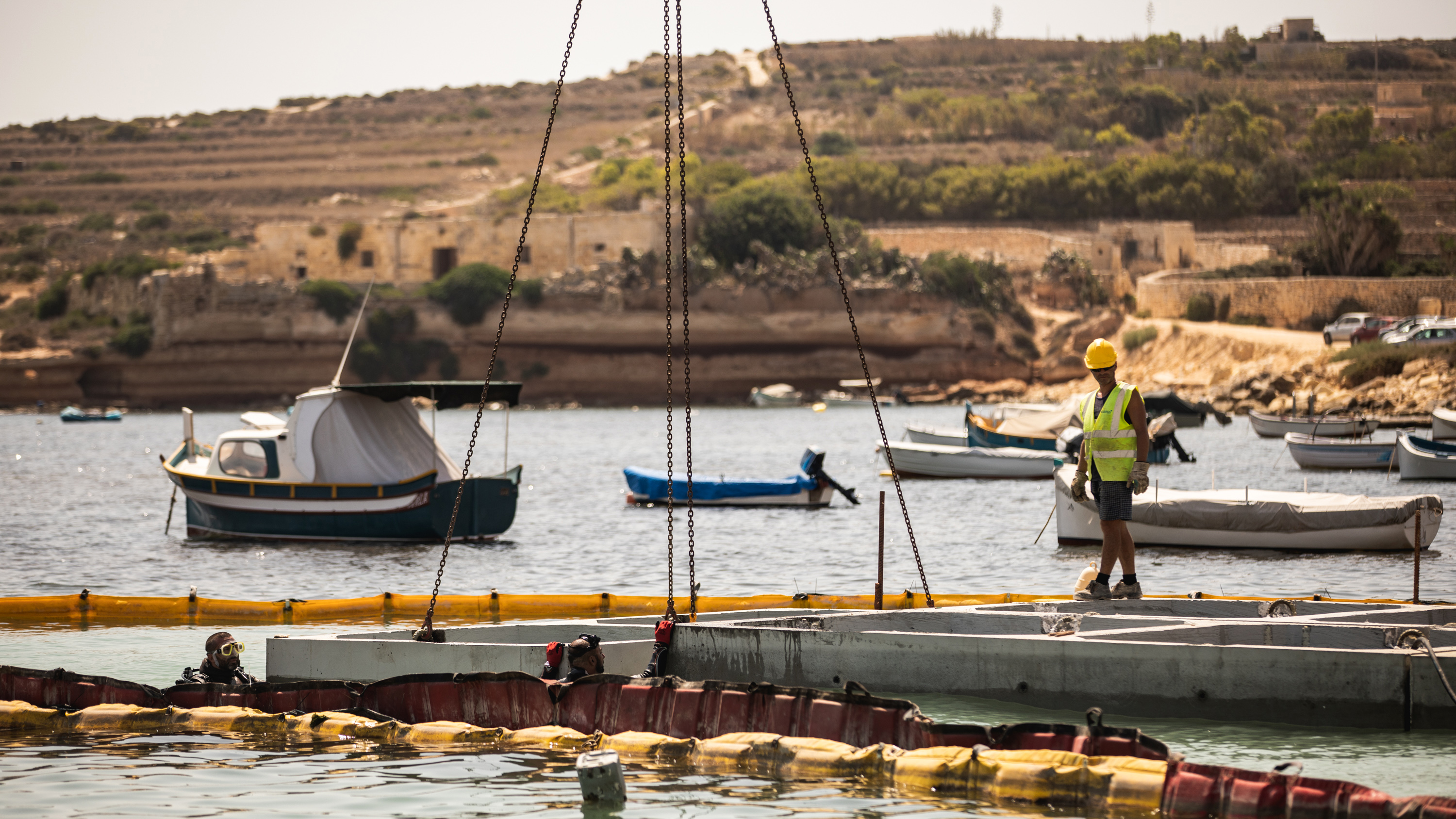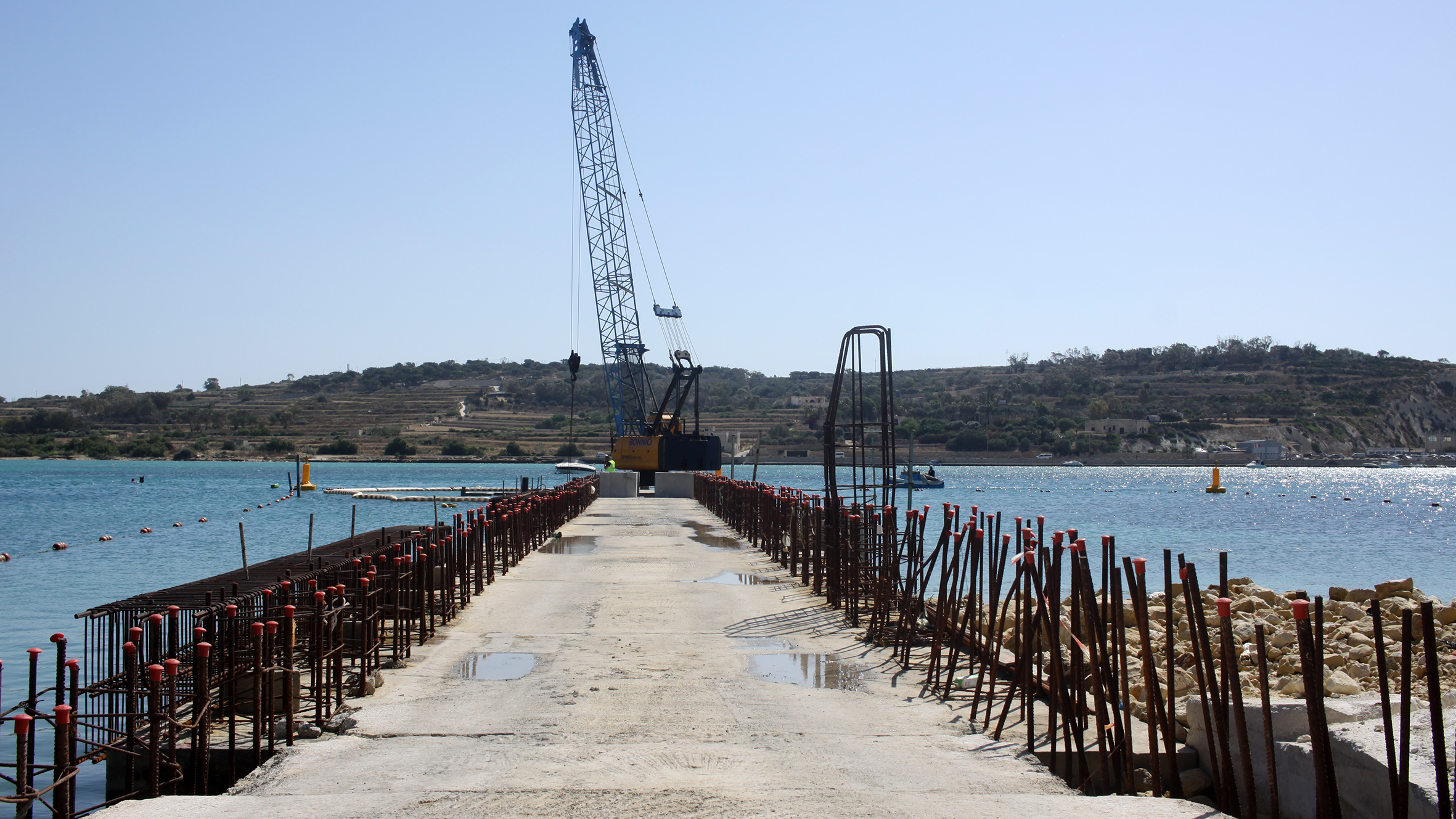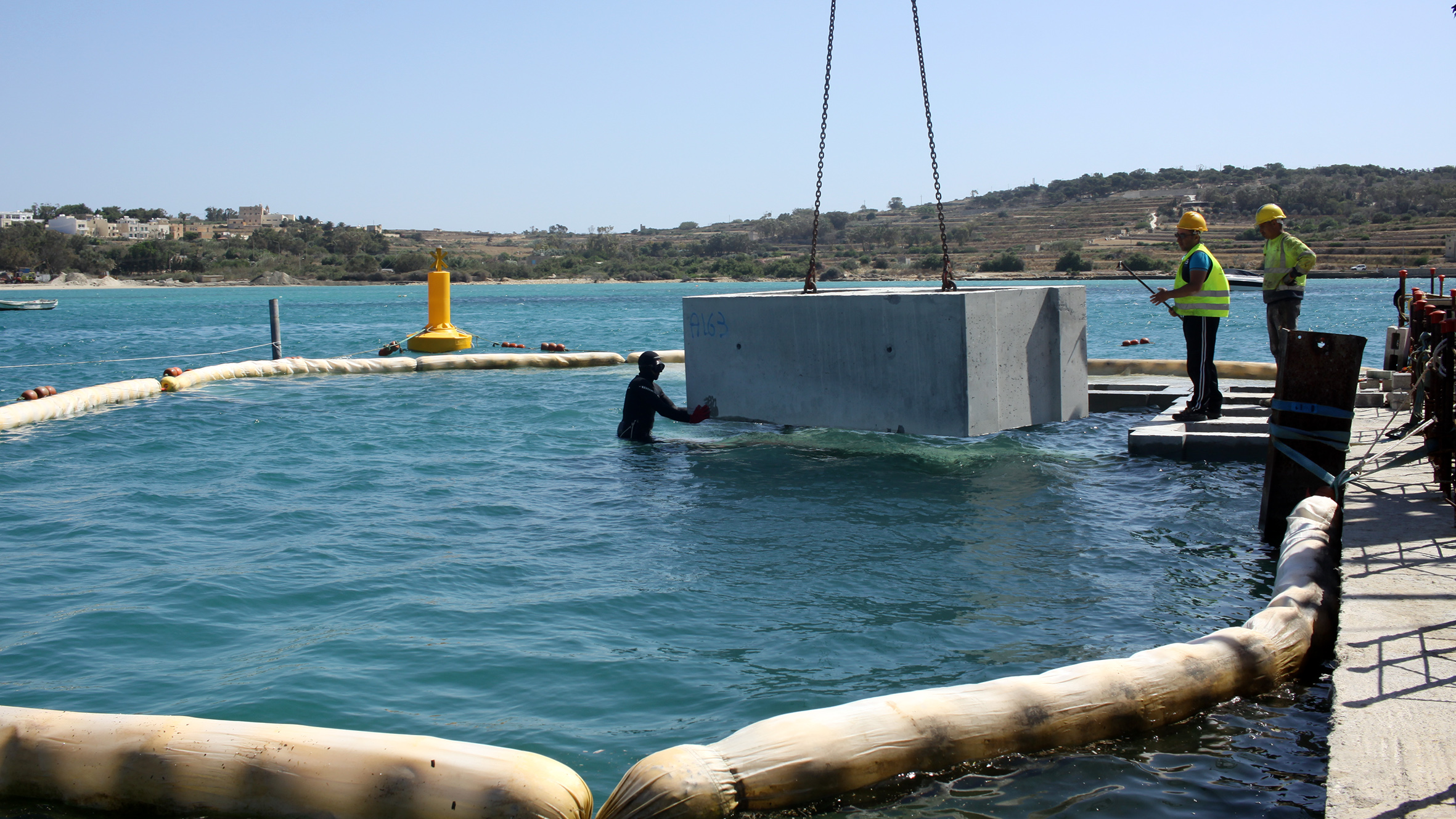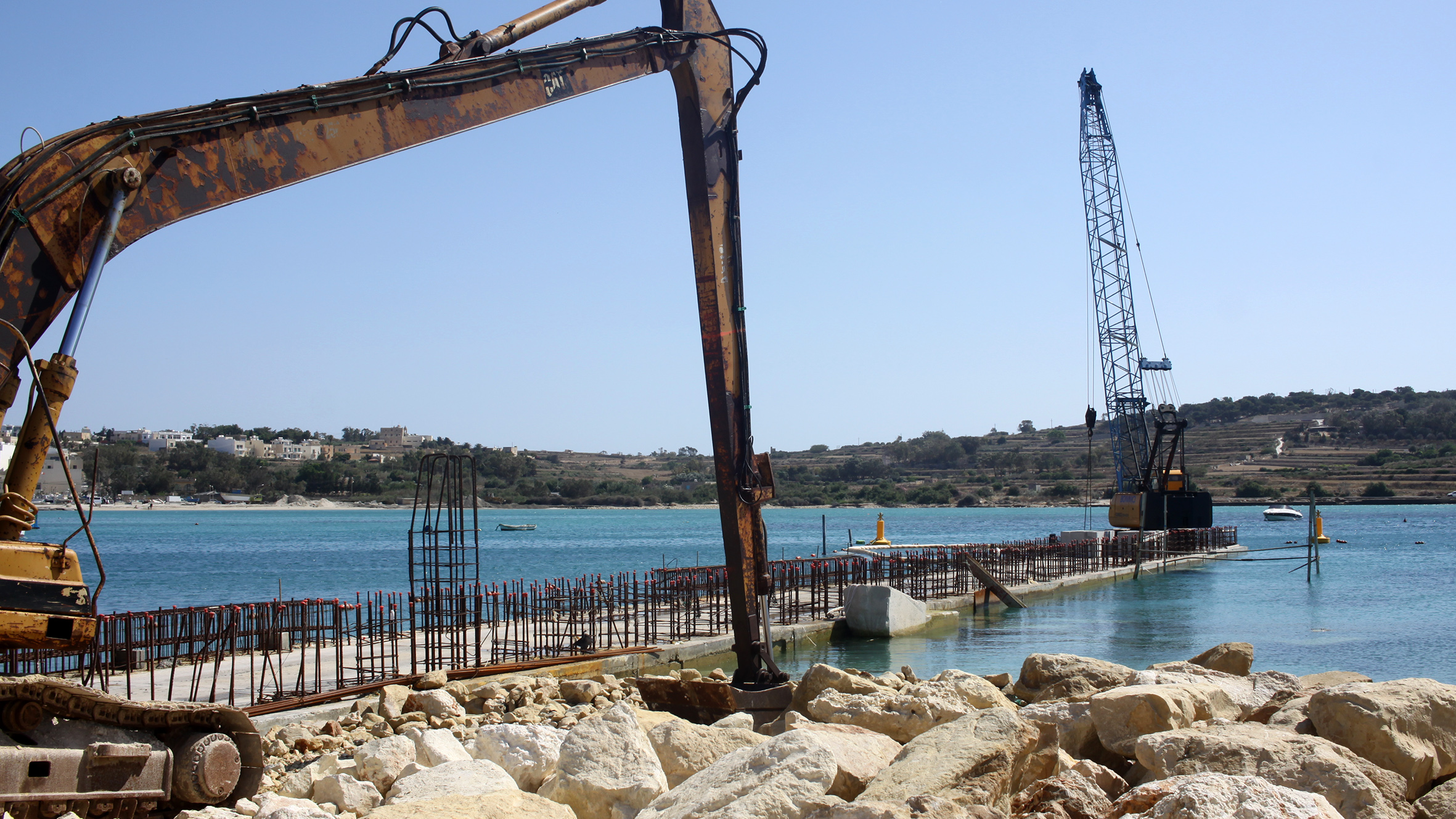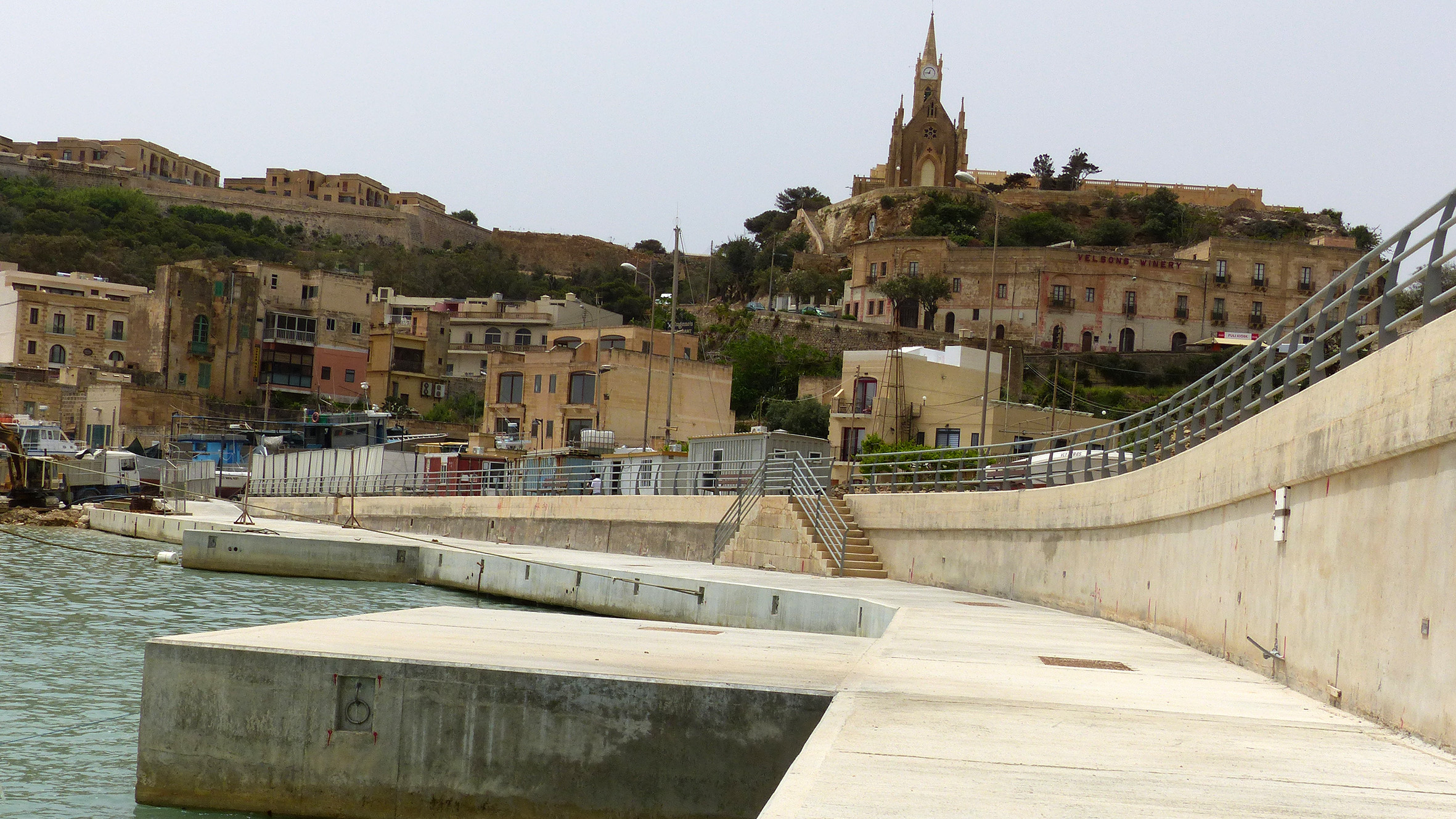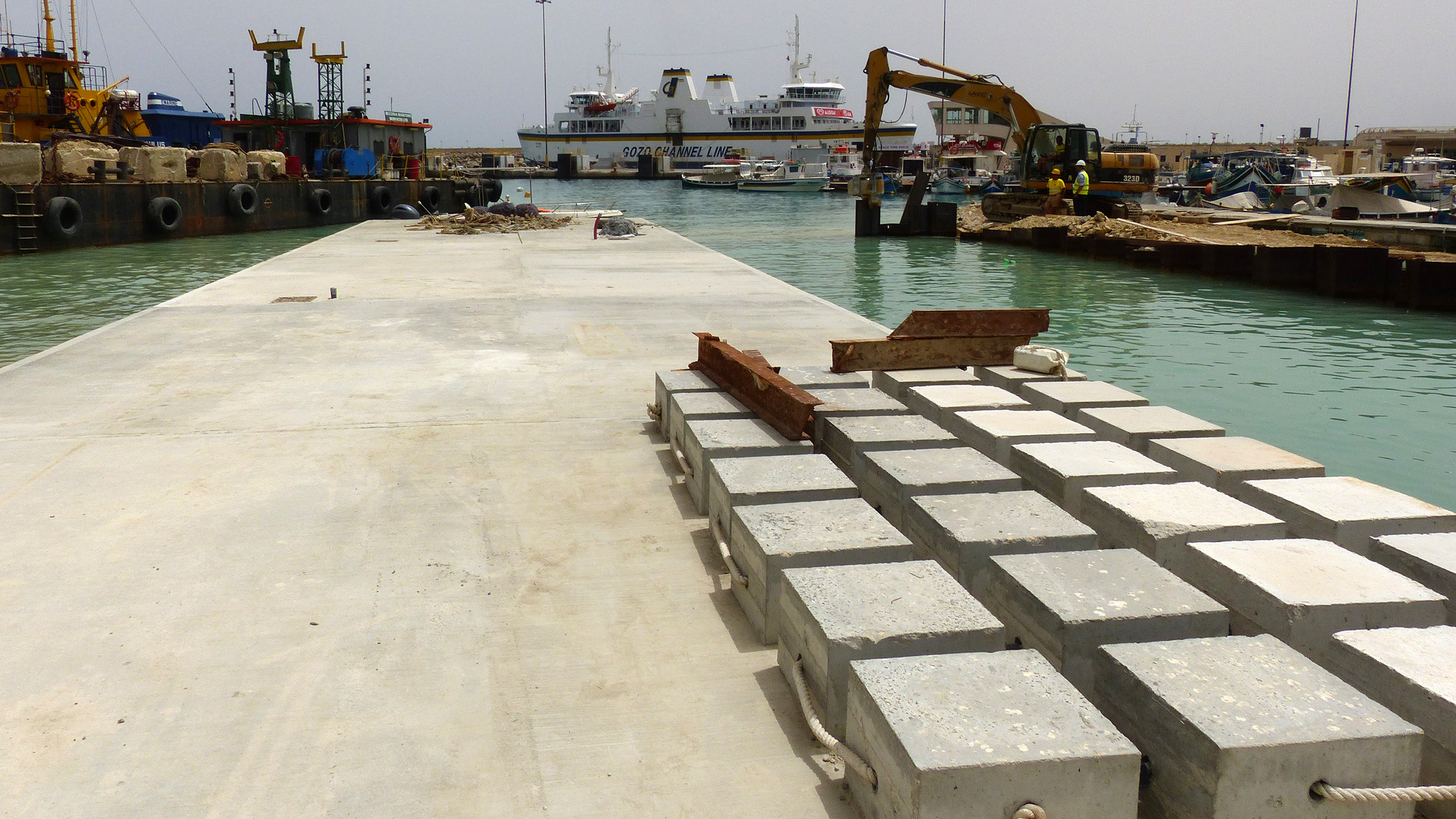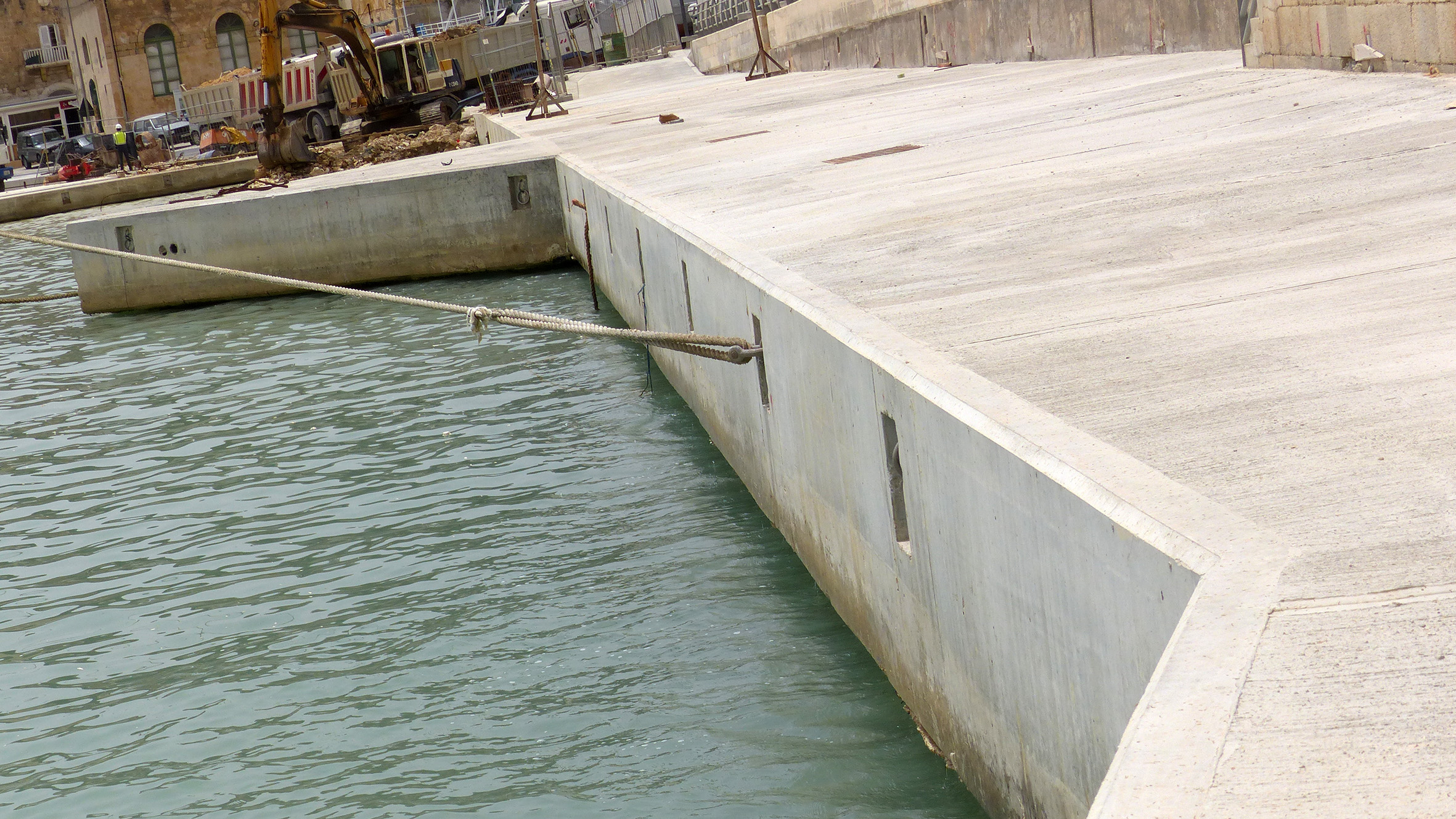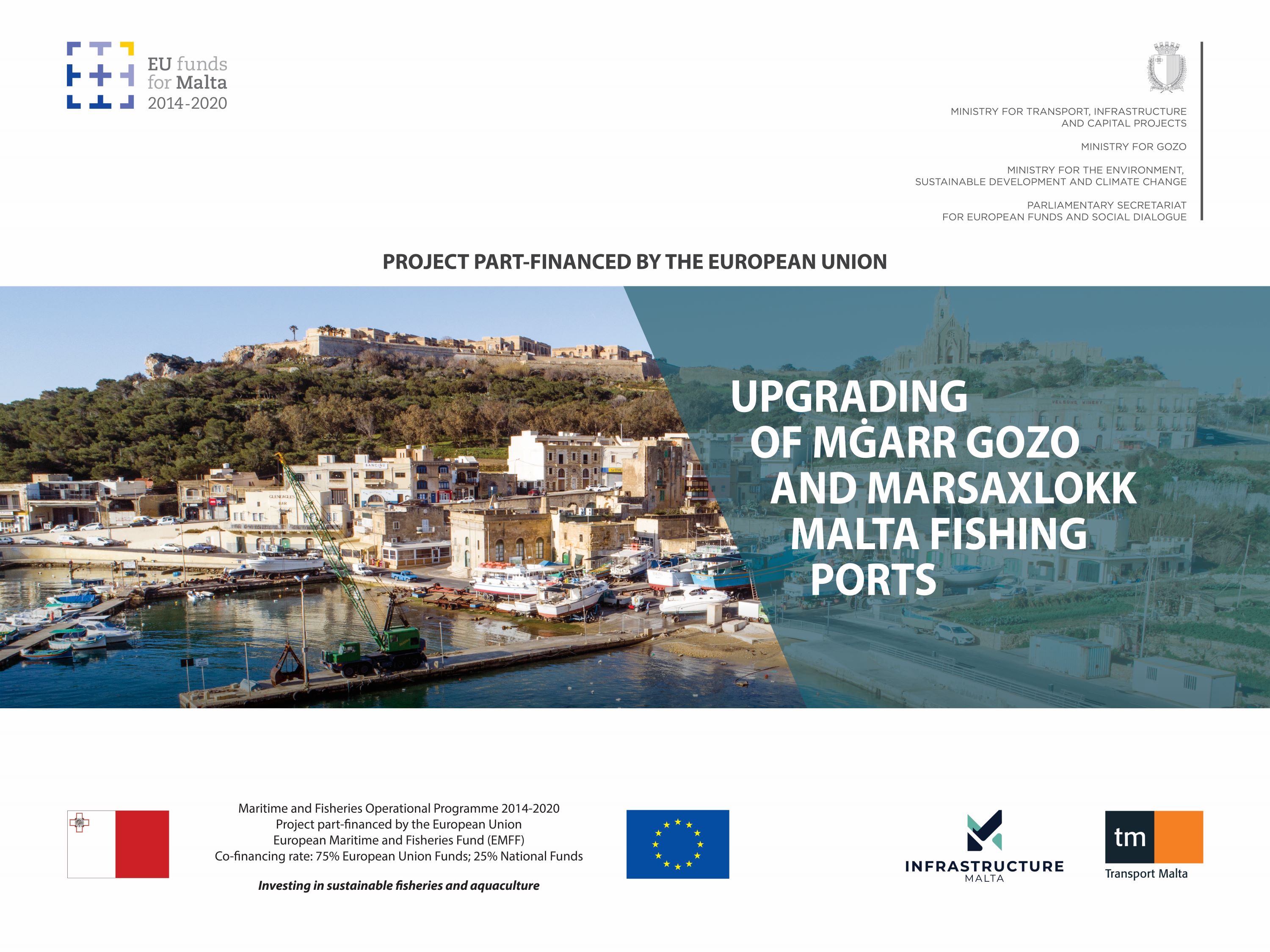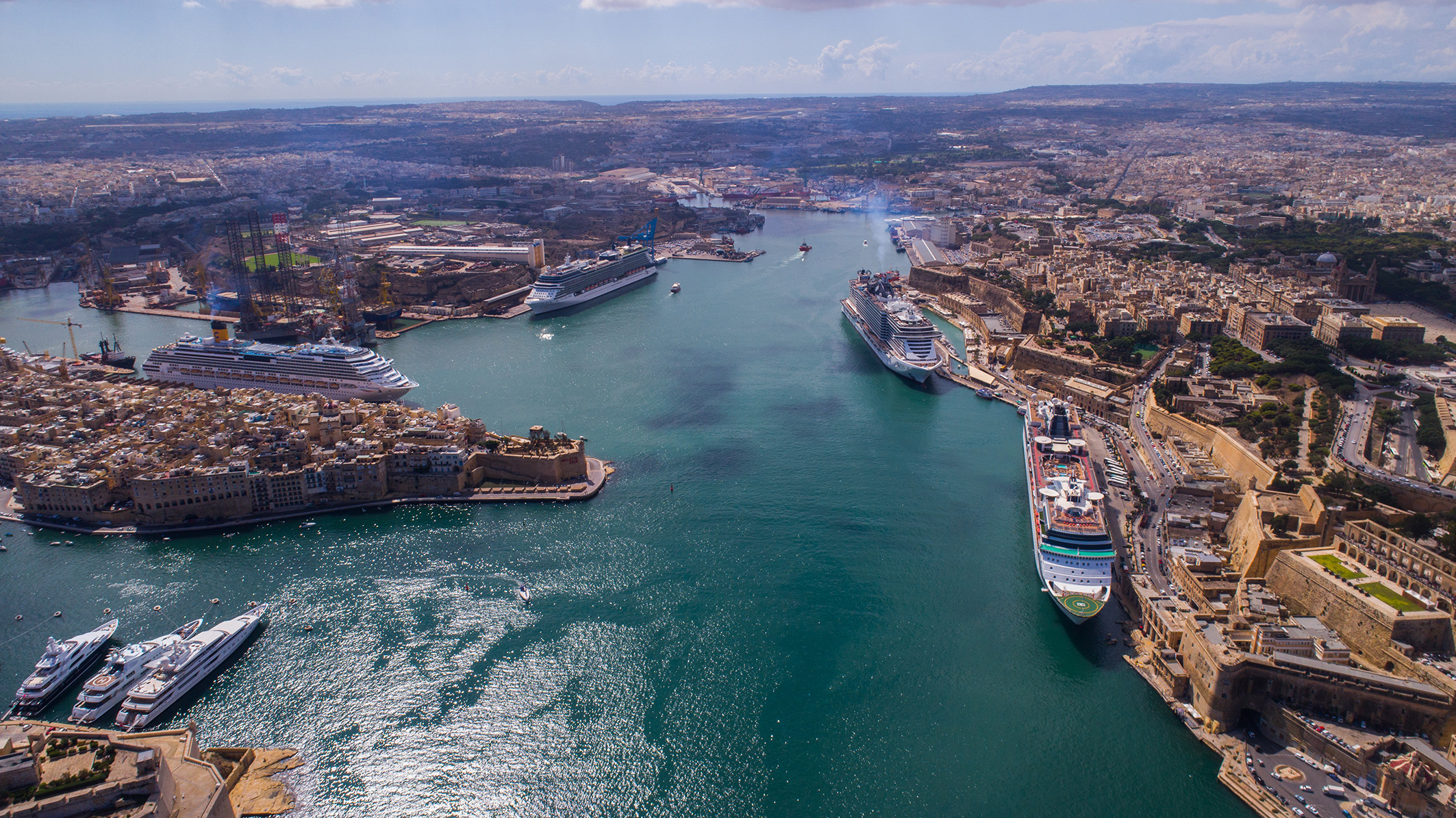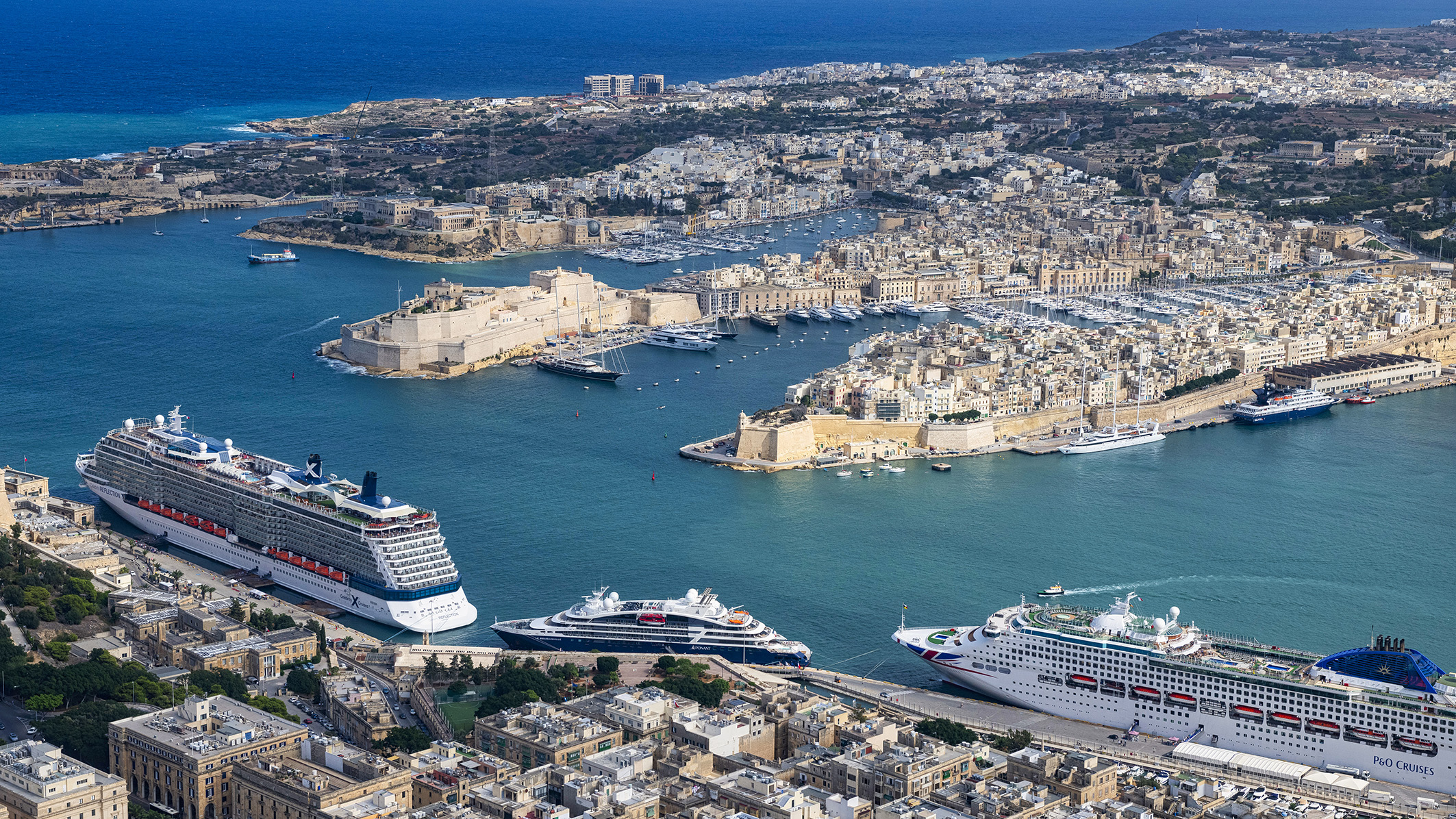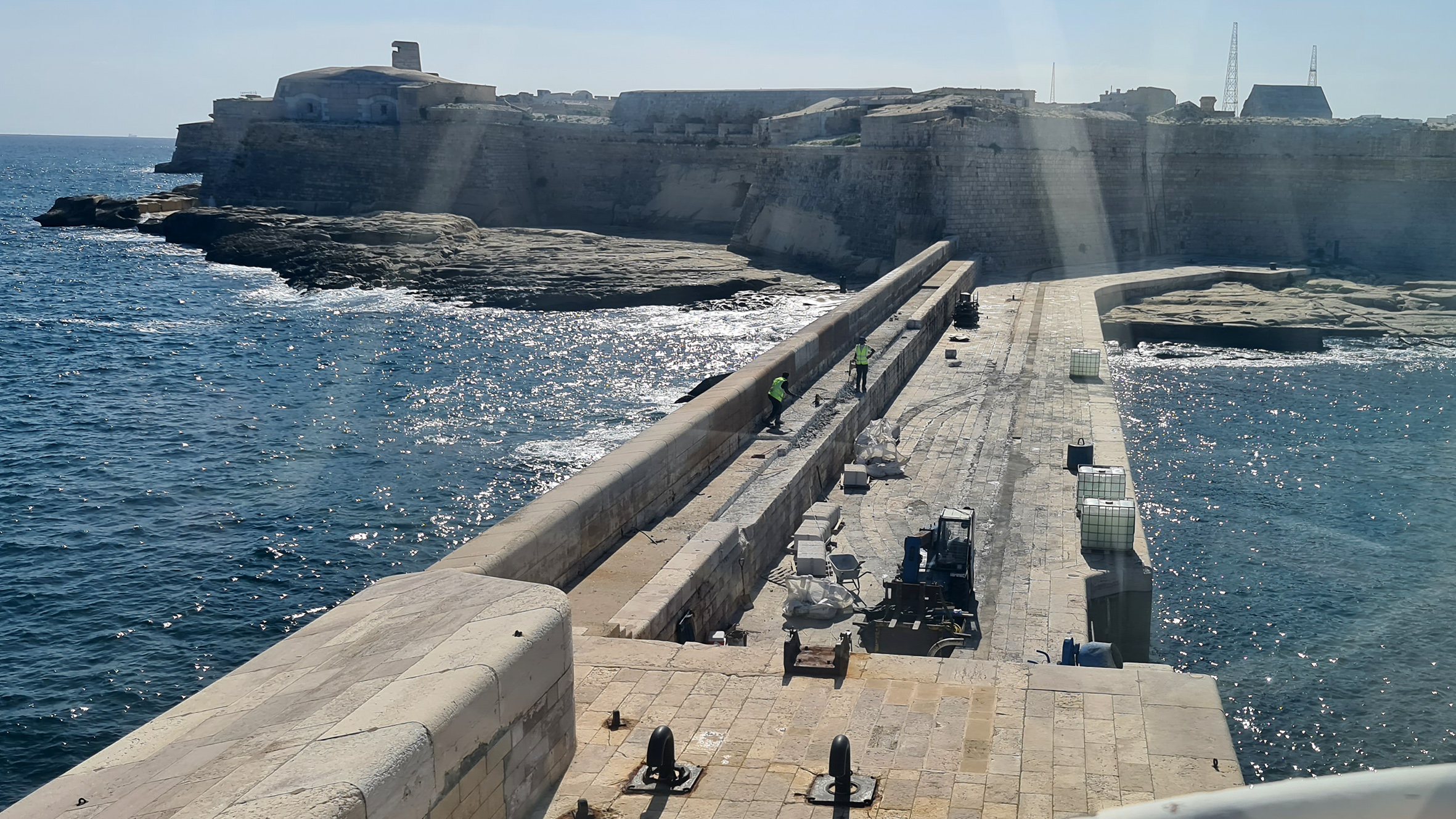
Grand Harbour Breakwater repairs in progress
Infrastructure Malta is implementing a €1 million project to repair and restore the two arms of the 1910 Grand Harbour Breakwater and its 2012 steel bridge.
Decades of waves battering the 110-year-old breakwater dislodged many of the large blocks of this breakwater’s coping structure, putting it at risk of further erosion and irreparable damage. Infrastructure Malta is replacing the missing elements, whilst carrying out other maintenance and restoration works to this important coastal infrastructure.
At the same time, the agency is carrying out major maintenance and refurbishment works to the steel bridge connecting one of the breakwater’s arms with Valletta.
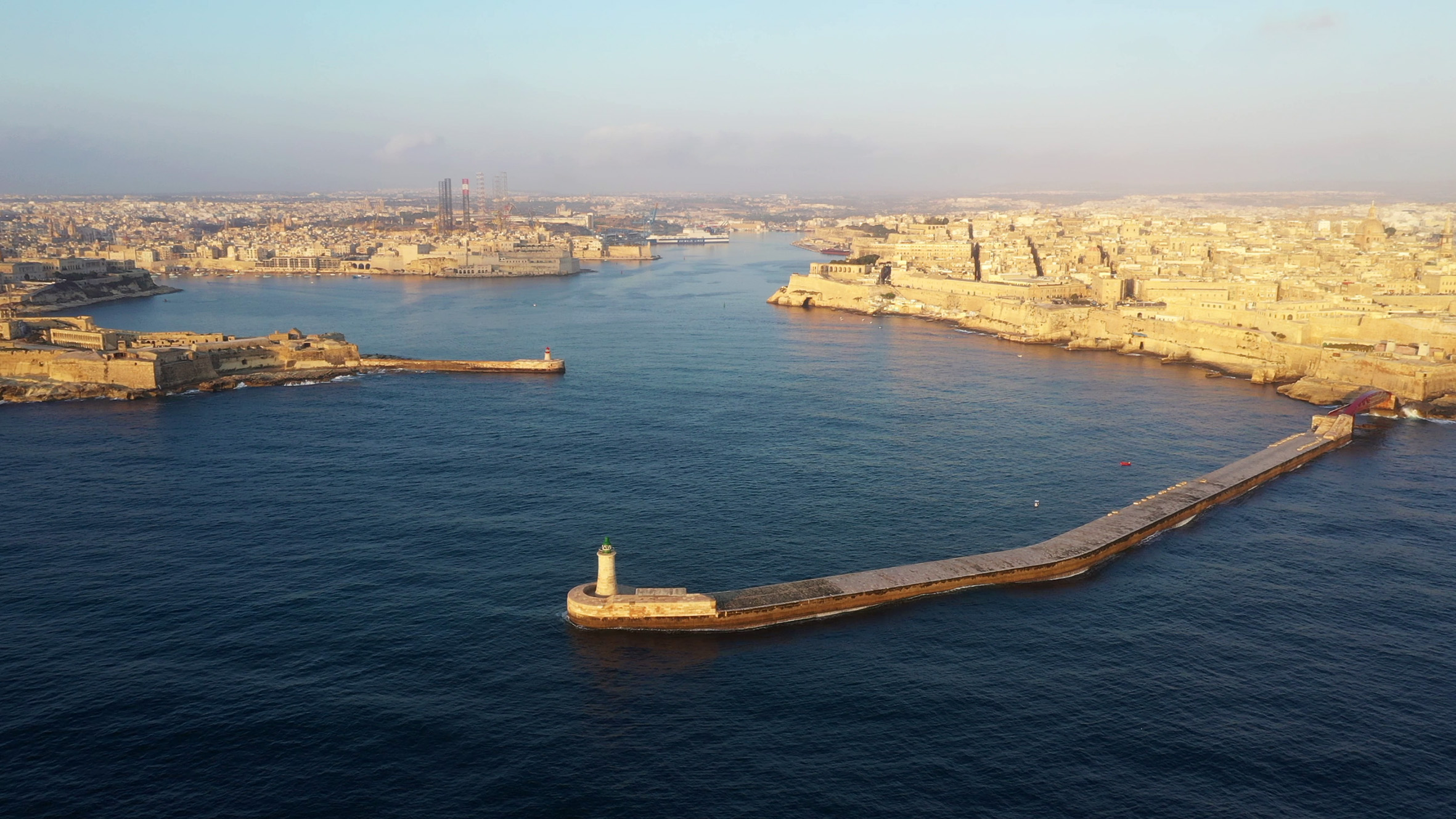
The Grand Harbour Breakwater system consists of two separate structures. The longer arm, on the Valletta (Fort St Elmo) side of the port, is a 370-metre structure physically detached from the mainland. The second arm extends 120 metres from the shore beneath Kalkara (Fort Ricasoli) on the other side of the harbour. King Edward laid the first stone of this British Government project during a visit to Malta in 1903. Despite several setbacks due to bad weather during its construction, the breakwater was completed in 1910, at a total cost of about £1 million.
As part of the ongoing Infrastructure Malta repair works, a team of divers and other workers retrieved the original coping stones that had fallen into the sea around the breakwater through the years. They cleaned and inspected the salvaged stones to make sure they were suitable for re-installation, before reinstating them at the edge of the breakwater’s deck. The project contractors also imported similar limestone blocks from a quarry in Trani, in the Puglia region of Italy, to replace the ones that were broken by the force of the waves.
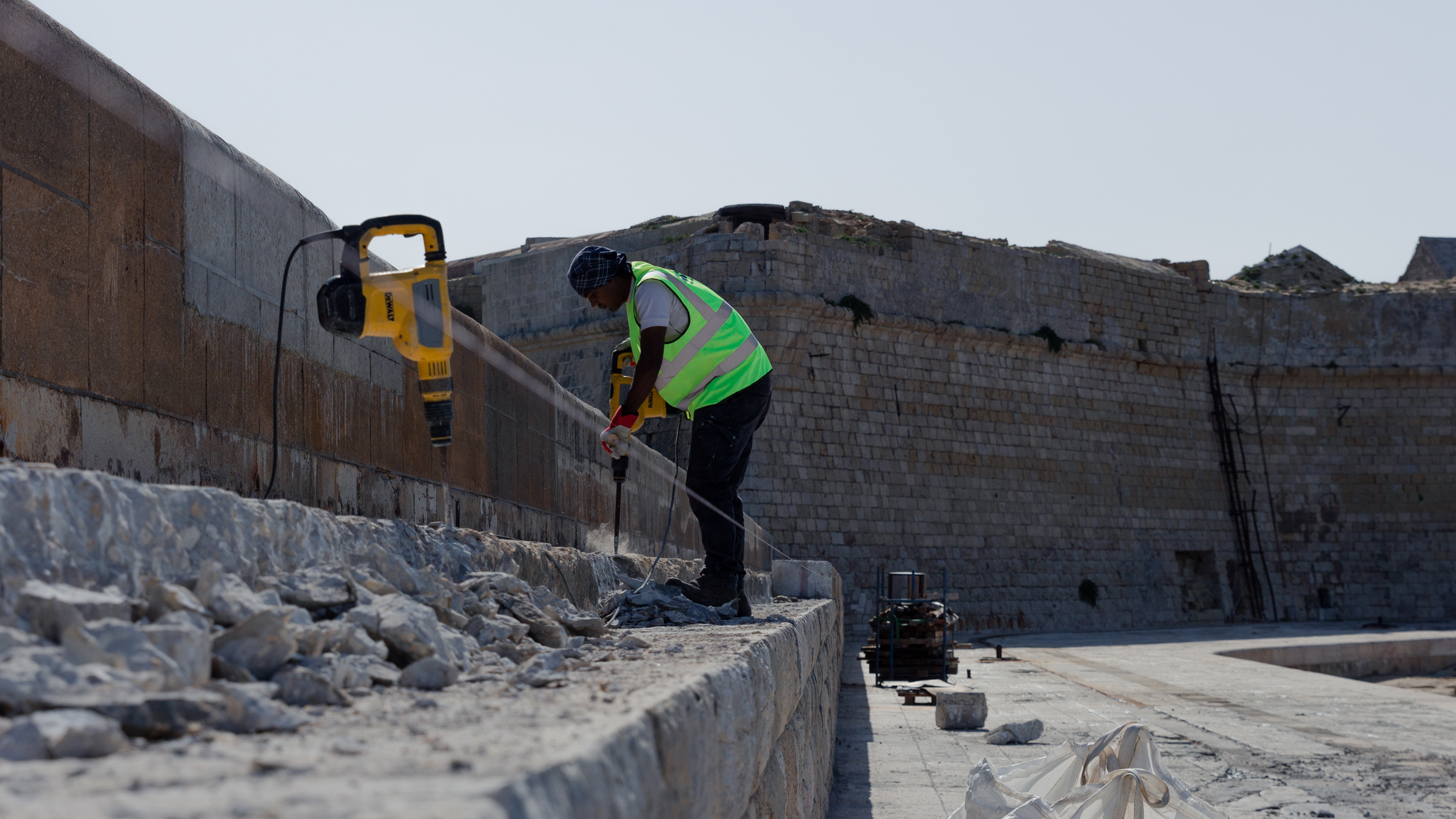
At the same time, the project workers are also carrying out other repairs to the deck slabs, whilst cleaning the masonry from tar stains and other deposits.
The original 1910 breakwater also included a bridge connecting the Fort St Elmo arm to the Valletta foreshore. This steel structure was destroyed by Italian e-boats during World War II. A similar bridge was built in the same location eight years ago. Infrastructure Malta is carrying out major maintenance works to this bridge as well. Workers are repairing and repainting the steel structure and replacing the damaged sections of its wooden deck. The agency will eventually also install new handrails and new electrical circuits with an improved lighting system.
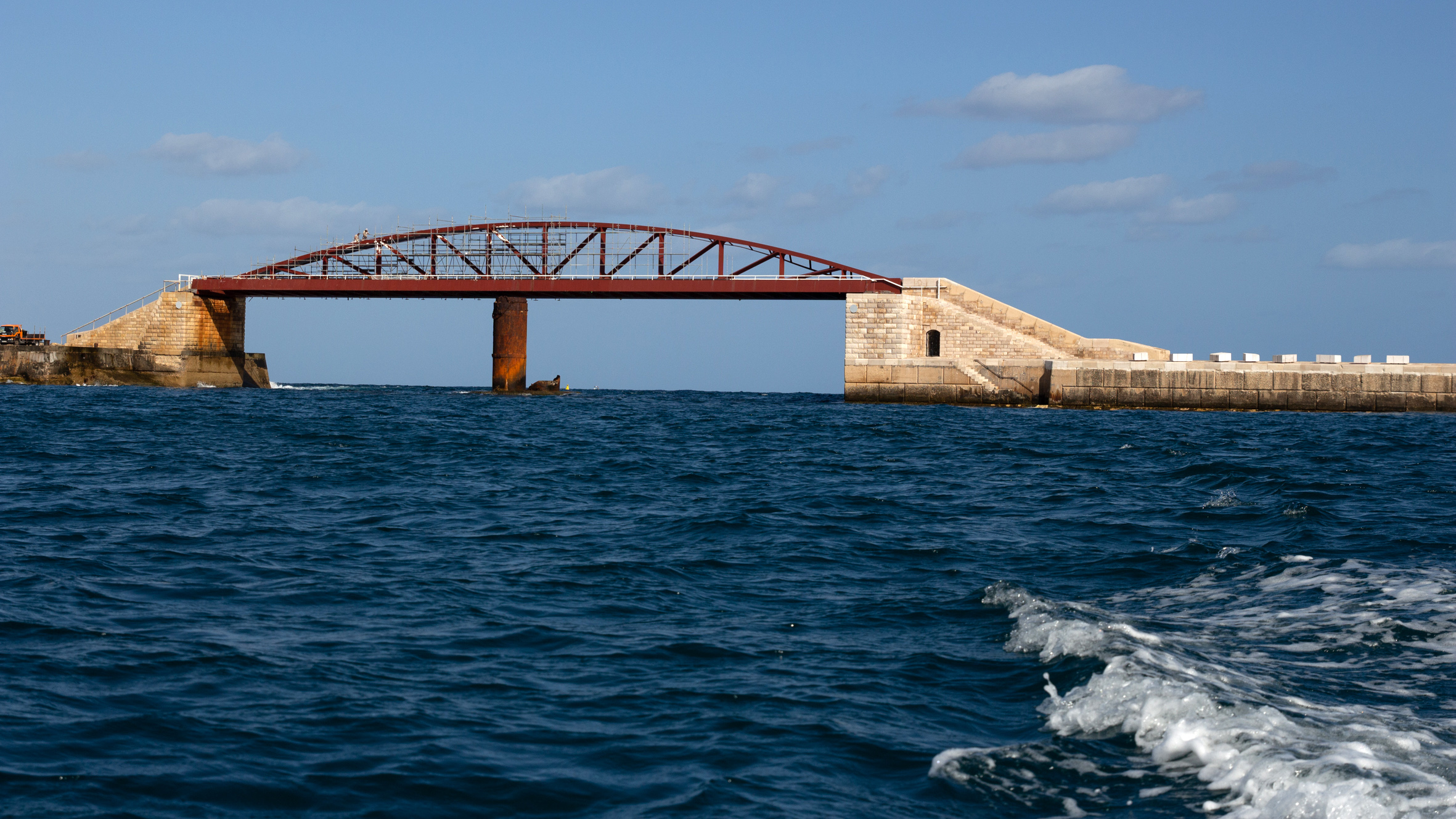
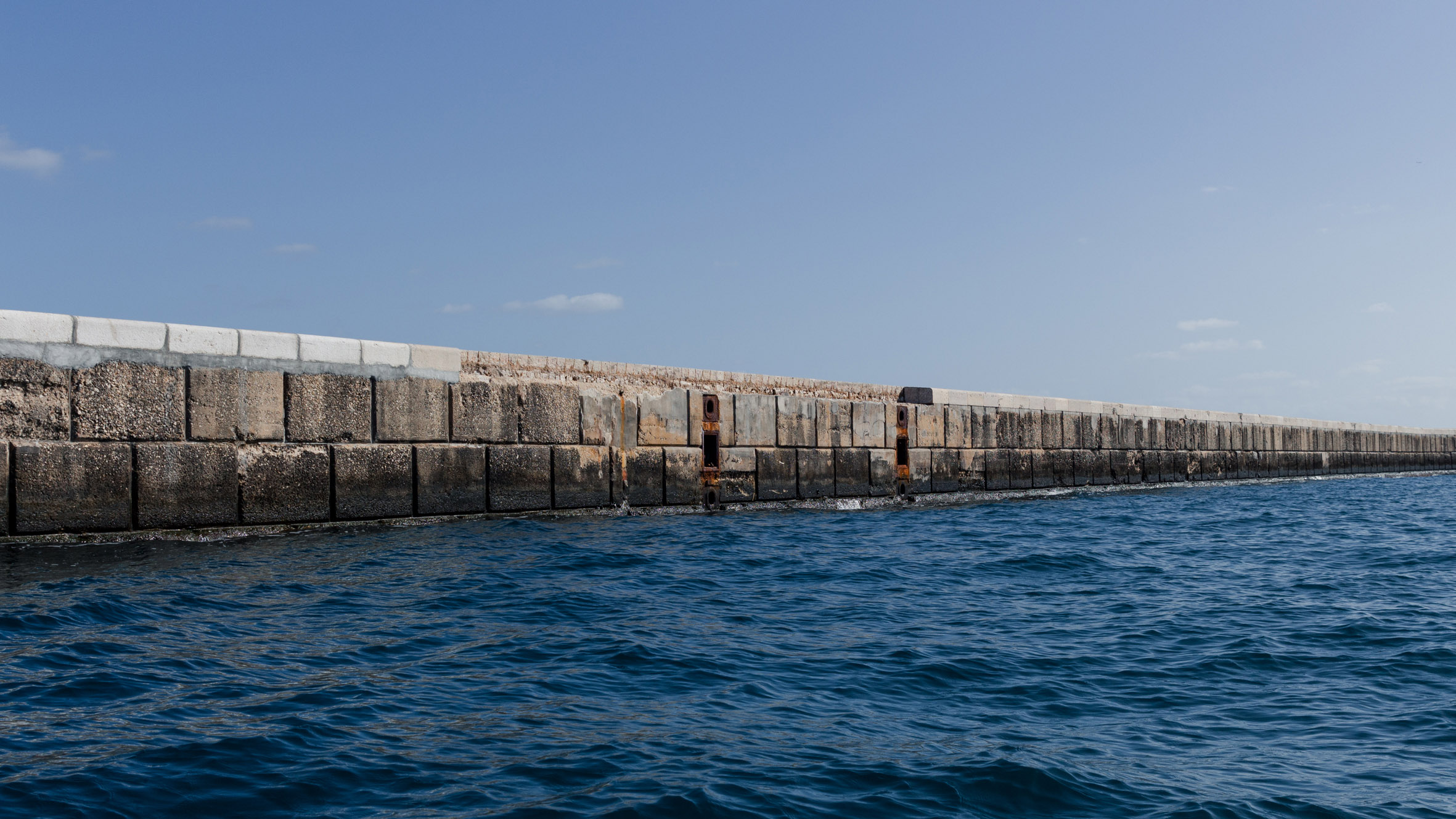
Weather permitting, all repair and maintenance works of the breakwater and its bridge will be ready by the end of this year.
Infrastructure Malta is currently also finalising plans for several other projects to improve the sustainability and efficiency of the Grand Harbour, Malta’s principal port. In the coming months it will start the €49.9 million Grand Harbour Clean Air Project, which includes the development of shore power facilities for cruise liners and Ro-Ro vessels whilst they are berthed at port. This investment will cut over 90% of the air pollution that cruise liners and Ro-Ro ships produce when visiting Malta. Other projects in the next few years will see the reconstruction of Sally Port, in Vittoriosa, as well as the upgrading of the Deep Water Quay, Pinto Wharf, Lascaris Wharf and Fuel Wharf (Ras Hanzir).
Technical studies for the design and construction of a new breakwater, a berm and a revetment in the Fort St Elmo area of the Harbour are also in progress. These new structures will provide additional shelter to the harbour, facilitating safer operations under different weather conditions.
Infrastructure Malta’s maritime team is currently also implementing several other major coastal investments in Malta and Gozo, including the construction of a new 110-metre breakwater in Qrejten, Marsaxlokk and the upgrading of berthing pontoons in the area known as “Il-Maghluq”, in the same fishing port. The €6 million upgrade of the quays, slipways and pontoons used by fishers in Gozo’s Mgarr Harbour is nearing completion. Other ongoing projects include the development of new landing facilities for ferry passengers in Sliema and Cospicua, and the maintenance and reconstruction of several quays and jetties in Marsascala, Mgarr ix-Xini, Balluta Bay and Cirkewwa.#
